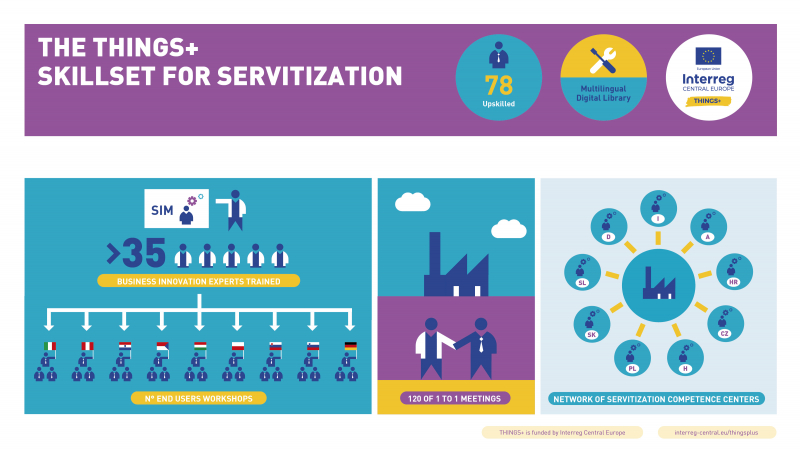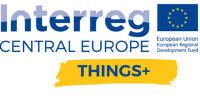Interview with Alessandra Gruppi, the business innovation expert
24. 10. 2019

Alessandra Gruppi is the business innovation expert that led the pilot action to test with SMEs the effectiveness of THINGS+ Service Innovation Methodology in Friuli Venezia Giulia, Italy.
She took part to the train-the-trainers in Ljubljana and together with Friuli Innovazione tutors delivered the end-users workshops and supported 13 manufacturing companies in implementing their servitization pilot projects.
What is the ideal ratio between providing products and services to customers for a company?
Servitization is a competitive choice and as such, the ideal percentage is tied, on one side, on how much the target market would value and hence ideally pay the service implicit in the offer and, on the other side, on the financial and managerial capacity of the company to manage, in full or in part, a service productive process.
At what stage in its development should a company look into servitization?
In a startup phase, it could represent the core of the business model. In a development phase, it could be the element of competitive advantage that allows to gain new market spaces. In a maturity phase or decline, it could be the element allowing business survival.
Which industries are most suitable for servitization?
Rather than wondering which the most suitable industries are, it is good to consider that in some industries, as ICT, servitization is already a widespread practice. Conversely, in other industries, in particular manufacturing, servitization represents a competitive strategy, in some cases even a survival strategy for companies that can in this way create entry barriers on their own clients, and a competitive advantage deriving also form the proximity with the client.
How long does it take for servitization to bring income in for the company?
It depends obviously on the type of industry and the reference service. In general, the servitization of a product can accelerate the introduction of the product itself in the market since it entails a minor initial disbursement from the side of the client. It is also true however that in some industries it is often preferable the purchase of a tangible good through the acquisition of the property in its entirety, rather that the negotiation of a service contract that may apparently require different competencies from the side of the buyer.
Which are the 3 main advantages in using the THINGS+ methodology for a company willing to start servitization?
THINGS+ methodology has several advantages; most relevant are:
- it accelerates the generation of potential ideas of servitization for the company;
- it encourages the evaluation of the effective interest (meaning willingness to value and hence potentially to pay the offered service) from the side of the potential client towards the service in question;
- it encourages an objective reflection with respect to the impact that the introduction of a new service may have on the current company organization and it contributes to identify the main intervention actions needed, in term of new human and financial resources or revision of organizational processes, to guarantee the sustainability and the successful launch of new businesses.

